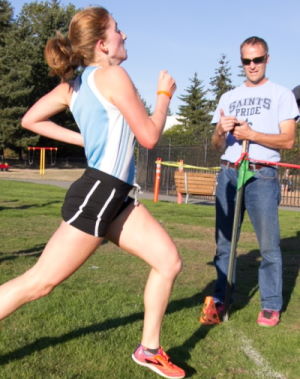Races up to 150-200 runners
Free
Needs volunteers

Volunteers taking times at the finish line.
2 timers (a primary and a backup) collect a sequence of times using a handheld timer or XCMeet’s phone app. Another volunteer records the finishing order by collecting XCMeet’s scannable clips or paper labels from the runners.
XCMeet will automatically combine times and finishing order for you, eliminating the need to manually put times together on a spreadsheet.